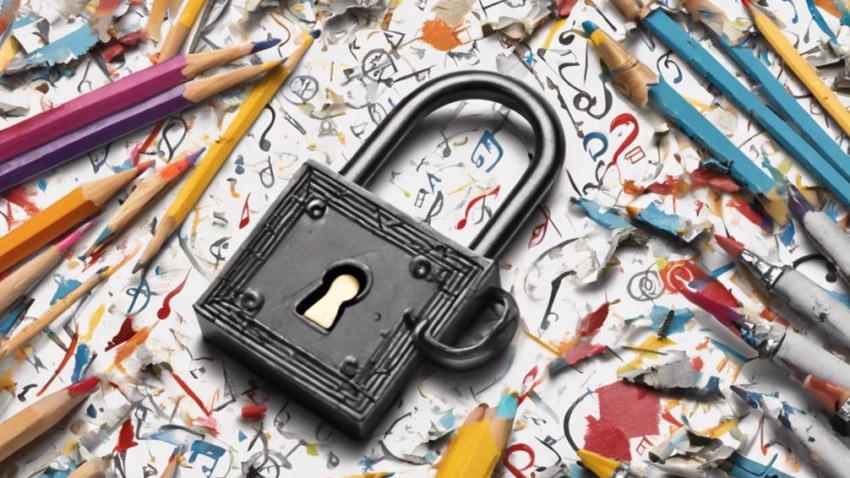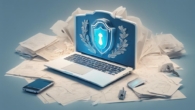
Understanding the Basics of Copyright and Content
Copyright law grants creators exclusive rights over their original works, ensuring they maintain control over use, distribution, and reproduction. Understanding copyright basics is essential for protecting intellectual property and avoiding infringement. Creators can register their work, use copyright notices, and license their content to safeguard their rights. However, copyright infringement can result in severe legal and financial consequences. By grasping the fundamentals of copyright law, individuals can navigate fair use, public domain, and licensing agreements, and develop best practices for content sharing. As they explore the complexities of copyright, they'll discover how to balance creative freedom with legal protection.
Defining Copyright and Ownership
Copyright law grants creators exclusive rights over their original works, ensuring ownership and control over how their intellectual property is used and distributed. This fundamental concept is the backbone of copyright law, as it empowers original creators to decide how their work is utilized and shared. By establishing ownership, creators can dictate the terms of use, reproduction, and distribution of their work, thereby maintaining creative control.
Original creators can register their work with the relevant authorities, obtaining a unique digital fingerprint that serves as proof of ownership. This digital fingerprint is a unique identifier that distinguishes the work from others, providing a clear record of ownership and facilitating the tracking of unauthorized use. This mechanism enables creators to safeguard their intellectual property and take legal action against infringers.
In essence, copyright law provides original creators with the authority to manage their work, including the right to reproduce, distribute, and display their creations. By exercising these rights, creators can protect their work from unauthorized use, ensuring that their creative efforts are respected and valued. As a result, copyright law fosters a culture of innovation and creativity, encouraging artists, writers, and inventors to produce original works that enrich our cultural landscape.
Public Domain and Fair Use
When a work's copyright expires, it enters the public domain, making it freely usable by anyone. However, determining what's in the public domain can be tricky, especially since copyright laws vary by country. Understanding what constitutes fair use is also important, as it allows for limited use of copyrighted materials without permission or payment.
Works Without Copyright
Works that are no longer protected by copyright or were never eligible for protection in the first place enter the public domain, where they can be freely used by anyone without obtaining permission or paying royalties. This includes works whose copyright has expired, as well as those that were never eligible for copyright protection, such as facts, ideas, and government documents. Government documents, for instance, are not eligible for copyright protection, making them part of the public domain. Orphan works, which are works whose copyright owners are unknown or cannot be located, also enter the public domain. These works can be freely used, adapted, and built upon without fear of copyright infringement. Understanding what constitutes the public domain is vital, as it allows creators to build upon existing works, promote innovation, and foster creativity. By recognizing the limits of copyright protection, creators can tap into the rich resources of the public domain to create new and original works.
Using Copyrighted Materials
What happens when creators need to use copyrighted materials, but want to avoid infringing on others' rights? This is where understanding public domain and fair use comes in. Creators can utilize Creative Commons licenses, which allow for sharing and adaptation under certain conditions. Online permissions can also be obtained, often in exchange for royalty fees. However, managing media clearance can be complex, and content filters may not always detect copyright infringement. Legal precedents have established educational exceptions, allowing limited use of copyrighted materials for educational purposes. However, commercial exploitation is a different story, and creators must be cautious to avoid copyright infringement. It's essential to comprehend the nuances of fair use and public domain to circumvent legal consequences. By doing so, creators can guarantee they're using copyrighted materials responsibly and legally, while also respecting the rights of original creators.
Types of Copyright Infringement
When it comes to copyright infringement, there are two primary types: direct and indirect. Direct infringement occurs when someone directly copies or uses copyrighted material without permission. Indirect infringement, on the other hand, involves contributing to or facilitating infringement by others.
Direct Infringement Cases
Direct infringement cases involve intentional and unauthorized uses of copyrighted material, typically resulting from a deliberate act by an individual or entity. These cases often involve blatant copying or misuse of copyrighted works, such as music, literature, or software. The infringer knowingly uses the copyrighted material without permission, often for personal gain or to cause harm to the copyright holder.
Some common examples of direct infringement include:
- Music piracy: Music pirates illegally distribute or download copyrighted music without permission, causing financial losses to artists and record labels.
- Copyright trolls: These individuals or entities intentionally infringe on copyrighted works, then demand payment from the copyright holder to settle the infringement claim.
- Software counterfeiting: Counterfeiters create and distribute fake or modified software, violating the copyright of the original software creators.
In direct infringement cases, the copyright holder can seek legal action against the infringer, including damages, injunctions, and criminal penalties. It's essential for creators to protect their work by registering their copyrights and taking swift action against infringers.
Indirect Infringement Claims
In contrast to direct infringement cases, indirect infringement claims involve third-party facilitation or contributory infringement, where an individual or entity enables or induces others to infringe on copyrighted material. This type of infringement occurs when a third party provides the means or facilitates the infringement of copyrighted material, even if they don't directly infringe on the copyright themselves.
| Type of Indirect Infringement | Description |
|---|---|
| Contributory Infringement | Knowingly contributing to or inducing infringement by others. |
| Vicarious Liability | Benefiting financially from infringement committed by another party. |
| Inducement | Intentionally encouraging or inducing infringement by others. |
| Material Contribution | Providing the means or facilities that facilitate infringement. |
| Criminal Infringement | Willfully infringing copyright for commercial gain or financial benefit. |
Indirect infringement claims hold third parties liable for copyright infringement, even if they don't directly infringe on the copyright. This type of liability is often referred to as third-party liability or contributory negligence. By understanding indirect infringement claims, content creators can better protect their work and hold accountable those who enable or induce copyright infringement.
Protecting Your Intellectual Property
By registering their creative works, artists and creators can safeguard their intellectual property from unauthorized use, misappropriation, and theft. This proactive step ensures that their Brand Secrets and Creative Assets are protected from those who might seek to exploit them for personal gain.
Registering intellectual property not only provides legal recourse in the event of infringement but also serves as a deterrent to potential infringers. When artists and creators take the necessary steps to protect their work, they demonstrate a commitment to preserving their creative vision and maintaining control over their brand.
Here are three essential strategies for protecting intellectual property:
- Document everything: Maintain detailed records of the creation process, including dates, times, and descriptions of the work. This paper trail can be critical in establishing ownership and proving infringement.
- Use copyright notices: Clearly display copyright symbols (©) or phrases, such as 'All rights reserved,' to inform others that the work is protected by copyright law.
- Register with the U.S. Copyright Office: Formal registration provides a public record of the work and is required to bring a lawsuit for infringement.
Understanding Licensing and Permissions
When artists and creators decide to share their intellectual property, they must navigate the complex world of licensing and permissions, where granting access to their work requires careful consideration of the terms and conditions. Licensing allows creators to grant permission for others to use their work, while retaining ownership and control. This can be done through various licensing agreements, such as Creative Commons licenses, which provide a range of options for sharing and using creative works.
Creative Commons licenses, for example, allow creators to specify how their work can be used, adapted, and shared. They can choose from a range of licenses, from Attribution (requiring only acknowledgment of the original creator) to NoDerivatives (allowing only verbatim copying). This flexibility enables creators to balance their desire to share their work with their need to protect their intellectual property.
In some cases, creators may choose to waive certain rights, such as royalties, to facilitate collaboration or sharing. Royalty waivers, for instance, allow creators to relinquish their right to payment for specific uses of their work. By understanding the nuances of licensing and permissions, creators can effectively manage their intellectual property, while also fostering collaboration and innovation. By carefully considering the terms and conditions of licensing agreements, creators can guarantee that their work is used in a way that aligns with their goals and values.
Consequences of Copyright Infringement
Copyright infringement can result in severe legal and financial consequences for individuals and businesses that fail to respect the intellectual property rights of creators. Ignorance of copyright laws is no excuse, and infringers can face serious repercussions.
The legal ramifications of copyright infringement can be far-reaching. Infringers may face:
- Lawsuits and damages: Copyright holders can sue for actual damages, statutory damages, or profits earned from the infringement.
- Injunctions: Courts may issue injunctions to stop the infringing activity and prevent further violations.
- Criminal penalties: In extreme cases, copyright infringement can lead to criminal charges, fines, and even imprisonment.
In addition to legal consequences, copyright infringement can also have significant financial implications. Infringers may be liable for:
- Legal fees and court costs
- Damage to their reputation and brand
- Loss of business opportunities and revenue
It is essential for individuals and businesses to understand copyright laws and respect the intellectual property rights of creators. Failure to do so can result in severe legal and financial consequences that can have long-lasting and far-reaching effects.
Best Practices for Content Sharing
To avoid the severe legal and financial consequences of copyright infringement, individuals and businesses must adopt best practices for content sharing that respect the intellectual property rights of creators. This means embracing a culture of Content Etiquette and Sharing Ethics, which prioritizes fairness, transparency, and accountability.
Here are some essential guidelines for content sharing:
| Best Practice | Description |
|---|---|
| Attribute the Source | Always give credit to the original creator by providing a link, citation, or mention. |
| Ask for Permission | Request permission from the copyright holder before sharing or using their work. |
| Use Creative Commons | Utilize Creative Commons licenses that allow for sharing and adaptation, with proper attribution. |
Frequently Asked Questions
Can I Use a Copyrighted Work if I Give Credit to the Owner?
As she navigates the complex labyrinth of copyright laws, she wonders: can she use a copyrighted work if she gives credit to the owner? Unfortunately, simply giving credit doesn't guarantee permission. However, she might be able to use the work under fair use exceptions or if it's licensed under Creative Commons. It's essential to understand these nuances to avoid legal entanglements.
Is It Legal to Share Copyrighted Content for Educational Purposes?
She explores the legality of sharing copyrighted content for educational purposes. While it's not a straightforward yes or no, fair use provisions and classroom exceptions can provide guidance. In the United States, for instance, educators can claim fair use when sharing copyrighted material if it's transformative, limited, and doesn't harm the original work's market. Additionally, classroom exceptions allow for limited use of copyrighted content in educational settings, provided it's not a substitute for purchasing the material.
Do I Need Permission to Use a Copyrighted Work for Parody or Satire?
When comedians like "Weird Al" Yankovic parody famous songs, they often don't need permission, thanks to fair use laws. Similarly, satirists can use copyrighted work without permission, as long as they're taking creative liberties to critique or comment on the original. However, the line between parody and infringement is blurry, and courts often decide on a case-by-case basis. To avoid legal troubles, it's best to consult with a lawyer or use public domain materials.
Can I Use a Copyrighted Work if It's Not Registered With the U.S. Copyright Office?
She shouldn't assume a work is in the public domain just because it's not registered with the U.S. Copyright Office. Registration is not a requirement for copyright protection. Many unregistered works are still protected by law. Without explicit permission or a clear public domain status, using an unregistered work can land her in a legal grey area, where copyright infringement claims can arise.
Is It Legal to Use Copyrighted Content if I'm Not Making a Profit From It?
Imagine walking through a vibrant art gallery, surrounded by masterpieces. Now, picture using those works without permission. While it's tempting to assume that using copyrighted content for personal use, without profit, is legal, it's not that simple. Fair dealing provisions vary by country, and even personal use can infringe on rights. It's essential to understand the nuances of copyright law to avoid legal repercussions.











